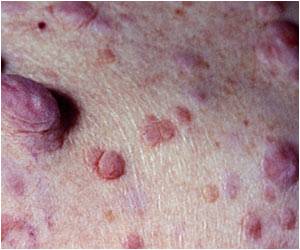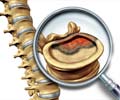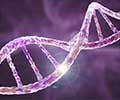Girls with neurofibromatosis type 1, rare genetic disorder caused by Nf1 gene mutations are at an increased risk of vision loss than boys with Nf1 mutations.

- Cause of vision loss in neurofibromatosis type 1 (NF1)-optic tumors unraveled.
- Estrogen activates immune cells to damage nerves required for vision in neurofibromatosis type 1.
- Neurofibromatosis type 1 is a rare genetic disorder
To discover why girls are more likely to experience vision decline from their tumors; Gutmann, postdoctoral researcher Joseph A. Toonen, PhD, and colleagues used mice model with Nf1 gene mutations specifically engineered to develop tumors on the optic pathway (nerves that carry vision-related signals from the eye to the brain). The findings of the study revealed that
- Male and female mice developed tumors that were identical in size and growth rates
- Only female mice exhibited significant nerve damage and vision.
- The Nf1 tumor cells contain a type of immune cells called microglia.
- Female mice had 3 times more microglia within these tumors than male mice.
During the immune cell activation process, the microglia release toxic compounds that cause collateral damage to nearby nerve cells. The microglia within the female mice optical tumors were activated and neurons near the tumors were also damaged.
Role of Sex Hormones in Neurofibromatosis Type 1
To test the role of sex hormones in the risk of vision loss, the research team removed the ovaries from female and testes from the male mice.
In female mice carrying the Nf1 mutation, a drug was used to block the action of the female sex hormone. Research revealed a drop in the number of activated microglia and a decrease in retinal damage and nerve cell death. Toxins were also produced by the activated microglia.
Gutmann said that boys with NF1 also experience vision loss, but the presence of female sex hormones increases the microglial activation, leading to greater optic nerve damage and vision loss in females.
"We would not have identified the key molecular signals that promote neuronal death without these sex differences. Moreover, these findings have implications beyond brain tumors and have led us to explore sex differences in other NF1 neurological problems, including autism, sleep and attention deficit." Gutmann said.
"We have been looking for ways to identify children at highest risk for vision loss, and now we think that one important factor is being a girl," Gutmann said. "I haven't relaxed my concern for the boys, but it's certainly heightened my concern for the girls."
Future therapies to attenuate vision loss in children with NF1-optic tumors might target these compounds.
The findings of the study are published in The Journal of Experimental Medicine.
Neurofibromatosis Type 1 (NF1)
- Neurofibromatosis type 1 is a rare genetic disorder. It is also known as von Recklinghausen’s disease.
- The disease is caused by a mutation of a gene present in chromosome 17 responsible for the control of cell division.
- 1 in every 2500 people is born with NF1.
- Learning disabilities appear in about 50% of children with NF1.
- NF1 causes children and adults to develop brain and nerve tumors.
- The tumors caused by NF1 are benign (they don’t spread to other parts of the body and lead to death - but still can lead to consequences).
- 20% of the children with NF1 develop brain tumors that involve optic pathway; in some children tNF1 can cause vision loss.
- Development of multiple non-cancerous tumors of the nerves and the skin
- Increased or decreased coloration of the skin i.e. Hypo or hyperpigmentation.
- People with neurofibromatosis type 1 have café-au-lait spots - flat patches on the skin that are darker than the surrounding area.
- Freckles in underarms and groin region.
- Joseph A. Toonen et al. Estrogen Activation of Microglia Underlies the Sexually Dimorphic Differences in Nf1 Optic glioma–induced Retinal Pathology; The Journal of Experimental Medicine; (2016) DOI:10.1084/jem.20160447
- Neurofibromatosis Type 1 General Information - (https://ghr.nlm.nih.gov/condition/neurofibromatosis-type-1)
- Neurofibromatosis NF Type 1 Facts - (http://www.nfauk.org/what-is-neurofibromatosis/nf-type-1/nf1-facts/)














